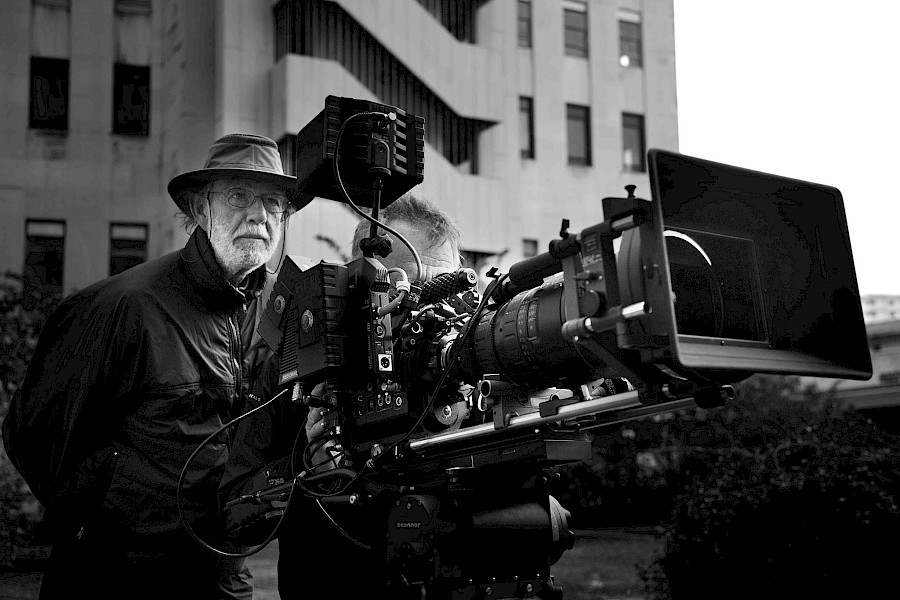
A person is never fully satisfied with what they have. The dissatisfaction stems from one of our key motivators: the ability
to imagine, compare, and desire. But first, it's essential to define what we mean by progress. Like everything in our world, progress is not straightforward. Profound spiritual development distances a person from worldly pleasures, just as indulgence in those pleasures distance a person from the drive for spiritual growth. In both cases, progress is present, as is contradiction. A person acquires an apartment and then desires a house – once they have a house, they want two. This cycle could continue infinitely if we had infinite resources. Thankfully, something or someone ensured that people are not condemned to eternal suffering in the captivity of their endless desires.
Reggio Godfrey is a proponent of spiritual growth and, consequently, an opponent of technological progress, believing it deprives humanity of its true home – the Earth. We often fail to notice our negative impact on our planet, not only because we don't want to, but because of the scale involved. By nature, we only perceive the pace of transformations that are permissible for the size of our bodies because we cannot feel the time flowing in a stone, let alone in a sufficiently large planet. As a guide, we have the stars and the moon at night, and the sun during the day. However, the transformation resulting from the negative impact of humanity's needs on a planetary scale is felt only when we encounter it, and we usually encounter it too late. Godfrey received the spiritual upbringing that allowed him to understand large-scale processes, which is why his rejection of technological progress is rational.
"It's not that we use technology, we live in technology." – Reggio Godfrey
Reggio Godfrey was born on March 29, 1940, in New Orleans, where he spent the first 14 years of his life before joining a monastery. For the next 14 years, he lived as a monk, fully immersed in metaphysical dialogue. After leaving the monastery, he turned to creativity, making a significant impact on the history of documentary filmmaking. In 1982, Godfrey, composer Philip Glass, filmmaker, screenwriter, and cinematographer Ron Fricke created the documentary film titled "Koyaanisqatsi," the first film in the "Qatsi" trilogy. This experimental, wordless film communicates its message with striking clarity through its visuals alone.
"Near the Day of Purification, there will be cobwebs spun back and forth in the sky." – Hopi prophecy.
The title Koyaanisqatsi has multiple interpretations, but they all convey the same idea – life out of balance. When balance is lost, destruction follows, while nature requires balance to create new life. This concept is described not only in Hopi culture but in most ancient cultures around the world, dimmed by the glowing screens of modernity.
The screen opens with rock drawings depicting a social hierarchy: figures in dark robes surrounding a person in a light robe with a crown. The film then transitions to archival footage of the "Sputnik V" launch, part of the "Apollo 12" mission, presented in slow motion. This represents a zeal for exploration. Although exploration may seem positive, in this context, it symbolises an inevitable path to self-destruction. On one hand, sending rockets into space is an impressive feat, but on the other, true knowledge may lie within us. The act of launching rockets could be seen as feeding the illusory ego of the masses. Throughout the film, Reggio revisits the theme of humanity’s self-importance and its illusions. Next, Godfrey wants to introduce us to nature in its untouched state. Expansive mountain landscapes and rocks, apparently shaped by wind and ancient seas, are shown. From a bird's-eye view, these mountains and rocks resemble the dense, scaly skin of a dragon turned to stone by time. However, this does not last long before Reggio slowly immerses us in the world
of natural connections. In fast motion, clouds sweep over the mountains like sea waves crashing against coastal cliffs. Godfrey's use of fast motion is deliberate. This becomes evident later when the smoothly flowing clouds are contrasted with the slow-motion river and sea waves. The heavens have their own flow of time, as do the seas, but by accelerating one and slowing down the other, the incredible similarity between these two different substances is revealed. It’s as though water carries the memory of its interaction with sea currents to the heavens, where air currents mirror the flow.
The visual poetry is disrupted by a dump truck, numbered 6, emitting black smoke. This introduces the theme of human needs, highlighting how people relentlessly exploit the planet’s resources. Soon, bombs are dropped, military planes fly over the desert, tanks are lined up, and the abandoned buildings of the failed Pruitt-Igoe housing project in St. Louis crumble, while business centres rise in megacities, their windows reflecting distorted images of clouds. This sequence illustrates how humanity perceives the world through a technological dome that blinds them. Reggio then circles back to the beginning, showing archival footage from the 1960s of an Atlas rocket launch from the Mercury programme. After liftoff, the rocket explodes, and a flaming piece of it falls back to Earth.
"A container of ashes might one day be thrown from the sky, which could burn the land and boil the oceans." – Hopi prophecy.
It’s important to understand that humanity’s path cannot be perfect, as the very concept of perfection exists because humanity is prone to making mistakes. If humans never made mistakes, the idea of rebirth would be meaningless, as rebirth is essentially a form of rethinking. Just as water and clouds are similar, so too are rebirth and rethinking. In nature, new shoots often grow from decaying wood. This is why "Koyaanisqatsi" neither condemns nor offers solutions, and thus stands as the pinnacle of documentary filmmaking.



